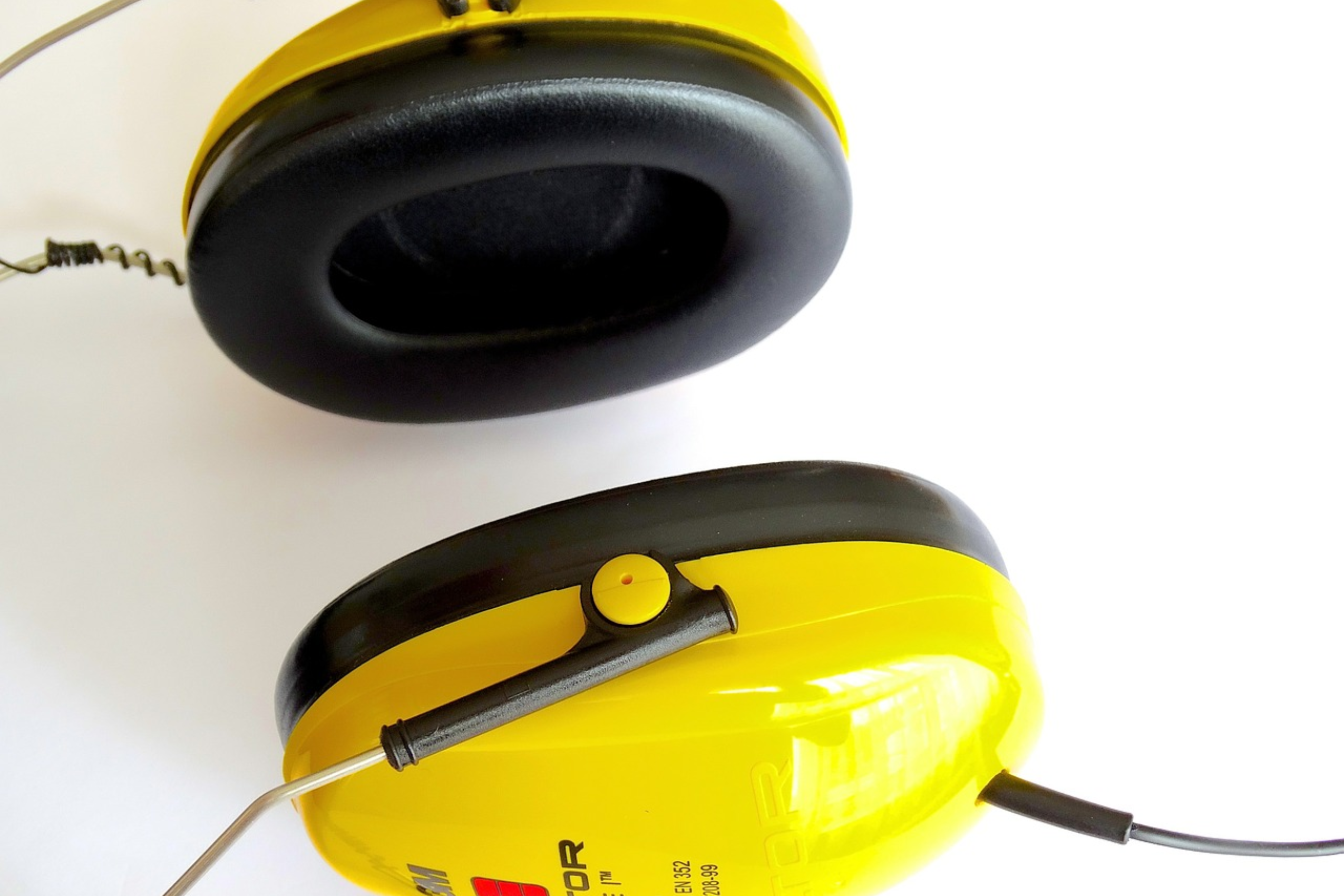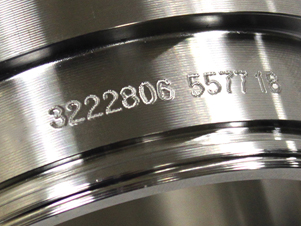Mecco: How To Get Control Over Industrial Part Marking Noise
By: Scott Cunningham (Sales Manager)
Anyone who has stepped foot in a manufacturing operation knows that machinery can get pretty loud. Pin stamping machines are no exception. But while most direct part marking sounds fall well under acceptable decibel limits, others can reach dangerous points if not well controlled.
Many industries, such as automotive, fabrication, oil and gas, and others, require deep marking on their parts for identification and traceability that often come from pin marking technologies. Thanks to the carbide pin that directly impacts a material to create deep, durable marks, dot peen applications can be noisy – depending on the type of material and product you’re engraving.
Marking certain products especially hard, hollow components can result in higher decibel levels.
These products include:
- Metal tubing
- Downhole pipes
- Wheel rims
- Flanges
Left unchecked, these noise levels can become difficult to control, potentially causing hearing damage, and more. The good news is that you have multiple options to reduce dot peen marking noise if you’ve determined there’s a potential hazard. So if you thought PPE (personal protective equipment) was the only answer, think again.
Your plant’s decibel levels don’t have to keep you up at night (literally and figuratively speaking). Learn how you can control industrial noise AND get the deep, permanent marks your industry requires.

- What are the Noise Level Standards for Industry?
- How do you Know if Noise is a Problem in Your Operation?
- What are the Risks of Industrial Noise?
- How to Control Industrial Noise for Pin Marking
- What to do Now: Pin Marking Machine vs. Scribe Marking Machine
- Find the Right Marking Solution for Better Noise Control
What Are The Noise Level Standards For Industry?
It’s well known that manufacturing products create various levels of noise. But just how loud is too loud?
Occupational noise is regulated around the world. Manufacturing employees are particularly at risk given their environments.
Roughly 46 percent of manufacturing workers have been exposed to hazardous noise levels. Around 18 percent of all manufacturing workers have difficulty hearing.
These effects, however, are preventable. The US Department of Labor is one organization that has a set of standards and controls to protect workers. OSHA noise exposure standards state that sound levels should not exceed 90 dBA over an eight-hour day, which means an 8-hour time-weighted average (TWA). This is called the permissible exposure limit, or PEL. Per their 5 dBA exchange rate, as exposure time decreases, that threshold increases. So at four hours of exposure, for example, the maximum dBA is 95. At 15 minutes, it is 115 dBA, and so on.
The National Institute for Occupational Safety and Health (NIOSH) sets their eight-hour exposure limits to 85 dBA, based on updated research. NIOSH also has a lower exchange rate at 3 dBA, so the limit for 15 minutes of exposure would be 100 dBA.
Outside of the US, noise thresholds can differ. In the EU, for instance, the European Directive 2003/10/EC defines the maximum limit as 87 dBA. Countries like Denmark and Norway set it at 85 dBA.
How Do You Know If Noise Is A Problem In Your Operation?
Pin marking is a necessity for many operations, especially those that need to comply with industry regulations or have a traceability program in place. So how can you continue to mark your products effectively while ensuring your employees are safe?
First, dot peen marking noise levels vary widely based on what you’re marking. A hollow component made of a hard material like steel, for instance, will amplify the sound and produce a louder noise than a solid component that absorbs much of the sound waves.
There are a few ways to determine if noise is a potential problem in your operation. According to OSHA, the questions to ask include:
- Do you hear a humming or ringing in your ears?
- Have you experienced temporary hearing loss?
- Do you need to raise your voice to speak to someone three feet away?
- Have you obtained a sound level test that indicates decibel levels over the allowable threshold?
If you’ve answered yes to any of these questions, you may have a problem. OSHA and NIOSH both provide sound measuring tools. NIOSH provides a Sound Level Meter App that you can download from their website, which they say was “developed by experienced acoustic engineers and hearing loss experts”.
At MECCO, our experts use similar tools in our lab where we test mark customers’ products to measure decibels as well.
What Are The Risks Of Industrial Noise?
You want to protect your employees. How do you protect both humans and your company from the dangers of industrial noise?
If you’ve ever heard the sound of metal on metal as a pin marker engraves a serial number onto a tube, you may have been exposed to more than 100 dB.

How does this level of sound affect a person?
One of the first signs of noise hazards in the workplace is irritation and stress. An overstressed operator may not be able to perform his or her job at top capacity, decreasing productivity.
Over time, that person may suffer permanent hearing loss. Repeated and/or prolonged exposure can harm nerve endings in the ear. As a result, that person can no longer hear high-frequency sounds and may not be able to understand speech. Since there is no medical treatment to restore permanent hearing loss, these results can be devastating.
Employee injuries like these affect entire companies as well. Regulations require companies to report any hazardous noise-related injuries. Yet, studies estimate that between 20% to 70% of recordable workplace injuries and illnesses are under-recorded, or not recorded at all. Workers can lodge complaints and, in certain states, can file for workers’ compensation benefits if they believe their hearing has been damaged on the job.
How To Control Industrial Noise For Pin Marking
If you’ve determined that noise levels are an issue in your plant, how do you minimize risk?
Every operation should consider these options carefully so they can continue to mark parts as safely and efficiently as possible.
OSHA categorizes industrial noise control into four main areas:
- Engineering controls
Their primary recommendation is to modify or replace the noise source with “low-noise tools or machinery”. The good news is that you do have options to modify or replace your dot peen equipment if you’ve concluded it is too loud. This is generally the most technologically feasible option and can usually make the following steps unnecessary - Administrative controls
You can also adjust your workplace to reduce noise exposure. Some of these adjustments include modifying when dot peen machines are running and limiting how much time each operator spends at that machine. - Hearing protection devices (HPDs)
Earplugs and other HPDs can be effective at reducing noise exposure. But these are generally seen as a last resort or used in intermittent time as another Engineering or Administrative control action plan is put into place. - Hearing conservation programs
When worker noise exposure is equal to or greater than 85 dBA for an 8-hour exposure in a manufacturing facility, employers need to implement a hearing conservation program. These plans include regular noise sampling, notifying employees about their risk, training, and monitoring.
One of the first things to consider is the part marking company you choose to partner with. At MECCO, defining your safety requirements is one of the first steps in our process. We can even test mark your products and train your staff to ensure you meet your operational safety goals.
What To Do Now: Pin Marking Machine Vs. Scribe Marking Machine
Once you recognize a noise hazard and understand your options to rectify it, what do you do?
Right now, you may be in one of these situations:
- Your operation is using a pin marking machine for identification and traceability and you’ve determined your current noise levels exceed standard thresholds.
- Or, you’re looking at purchasing a new marking machine and want to ensure you make the best choice for your operation.
Here are a few things you can do:
Replace: If you are currently using dot peen, the most common low-noise option to replace that equipment is a Scribe machine.
If you’re not familiar with Scribers, they provide deep marks, like dot peen, but with smooth, quiet operation. With an average volume of 64 dBA on aluminum tubing, the MECCO Scribe Marking Machine can mark as much as 30 percent quieter than US standards. This is an important step in reducing the risk of potential hearing loss for your employees.
While dot peen machines mark using a stylus that strikes the material as it moves across the part, Scribers work by pushing a hardened stylus into the material. Then the machine drags the stylus through the material. This dragging action results in minimal sound – just above the decibel level of a normal conversation. It also produces deep, durable marks to add permanent identification and traceability in a variety of forms.
Another advantage of scribing is the superior mark quality. You get clean, highly readable marks, as opposed to the dot pattern of pin marks. This is one reason the Scribe is chosen for aesthetic as well as quiet marking.
While some scribers lack when it comes to marking speed, MECCO also offers the fastest Scribe on the market.
Enclose: Another way to control marking noise is to create a physical barrier between the noise source and human ears. This can be done using an enclosure. A customized pin marking system with a noise reducing enclosure built to house the marking head can add additional layers of safety.
Take a look at this system, which has been customized to meet low noise requirements. It features light curtains and dual hand controls for safety. Simply place the part inside, activate the hand controls, and the auto door will shut and begin marking.
Adjust: If a Scribe or safety-enclosed pin marker are not options for your operation, there are still several controls you can employ. These involve changing or adjusting areas surrounding the sound source to reduce exposure. Administrative controls, HPDs, and hearing conservation programs are some solutions.
While these options can help limit noise exposure, they do not address the root cause. That is why OSHA recommends engineering controls before considering other options.
Find The Right Marking Solution For Better Noise Control
Part marking is essential to your operation. Your solution should be high quality, efficient, and safe.
Ultimately, the most effective solution is to treat the problem at the source. In this case, that means opting for lower noise equipment like the Scribe or a pin marking system with a safety enclosure.
When you’re ready to learn how you can better control industrial noise caused by marking in your facility, talk to the experts. MECCO has been engineering impact and other marking technologies since 1889. Today, we’re leaders in marking and traceability, featuring a full line of innovative laser, dot peen, and scribe technologies.
Whether it’s marking a critical VIN for the automotive industry, serial numbers on pipes for the oil and gas sector, or adding logos on steel for fabricators, the Scribe delivers marks that never fade in a machine that protects your employees’ hearing.
And with the capability of marking characters from 1mm to 20mm in height with the speed of up to six characters per second, the Scribe engraves a variety of materials of varying shapes and sizes, from round or hollow to flat or thick.
This content was originally published on the Mecco website.

